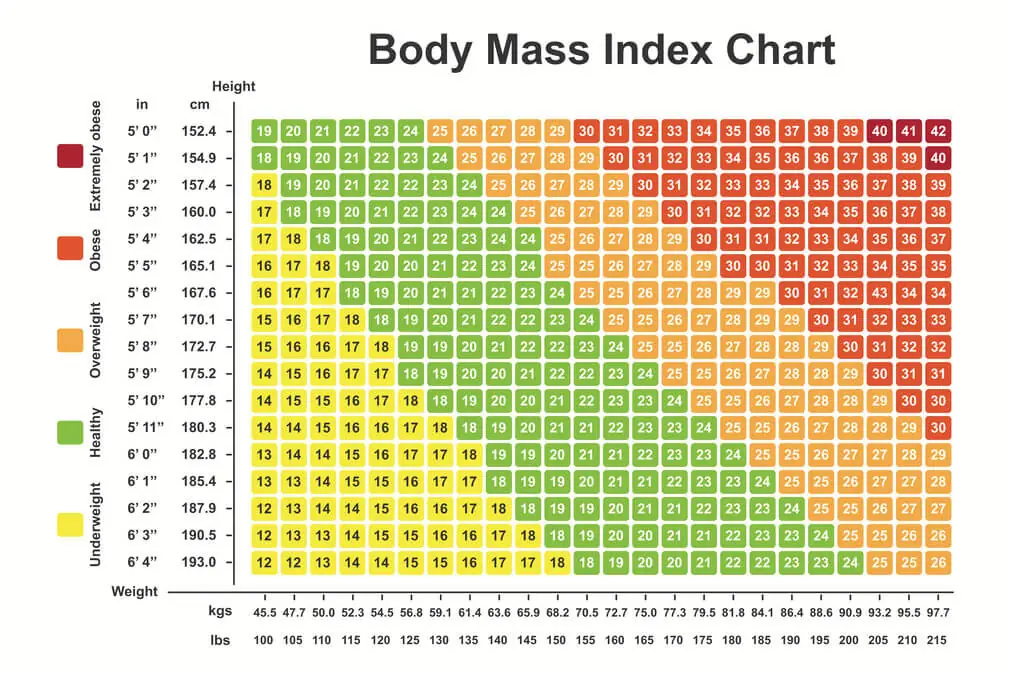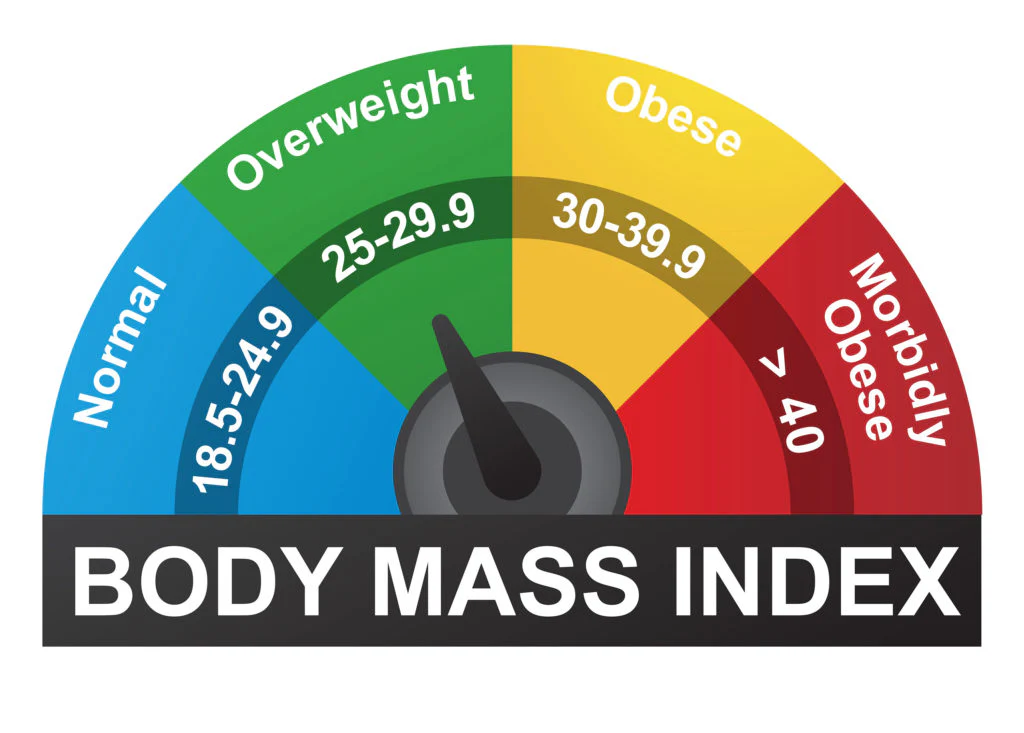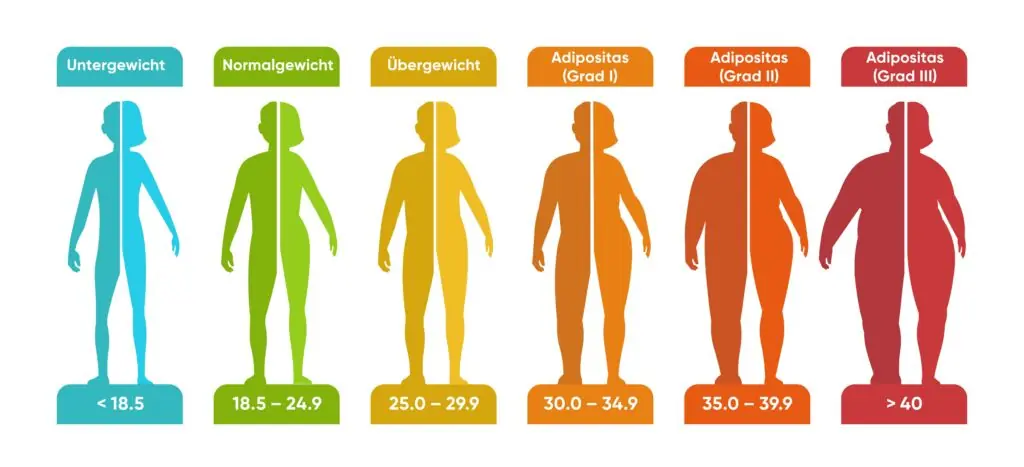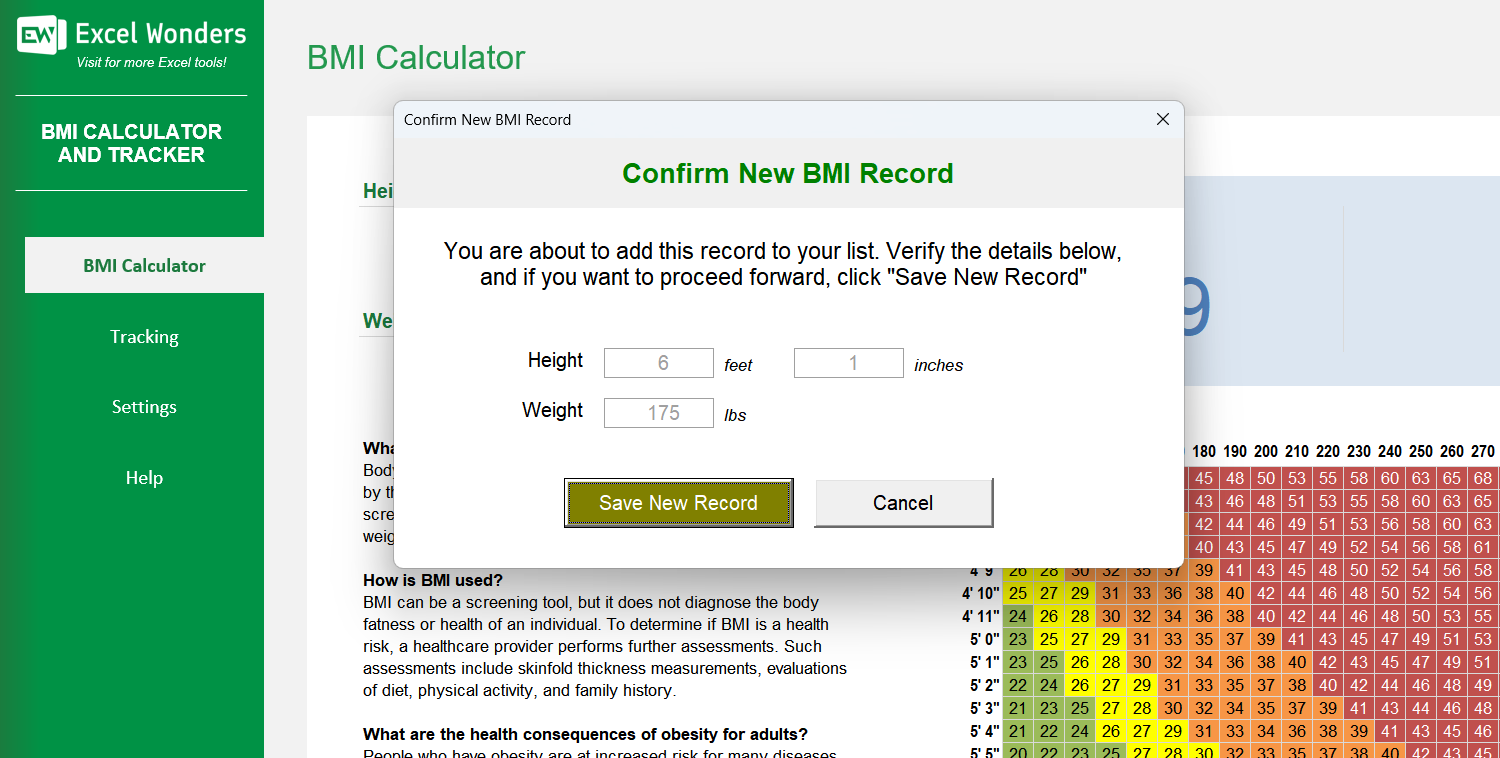In today’s health-conscious world, understanding our body mass index (BMI) has taken center stage in weight management and health assessments. The BMI calculator is a vital tool that gauges body weight in relation to height, helping individuals categorize their weight status into key classifications: underweight, healthy weight, overweight, and obesity. The simplicity and efficiency of this tool can spark a deeper dialogue about personal health, often becoming the first step towards a more informed lifestyle. With just height and weight, this calculator can shed light on potential health risks associated with various weight categories. However, it’s essential to remember that BMI is not a one-size-fits-all measure; it should be interpreted alongside other health indicators for a holistic view of well-being. This article dives into the nuances of the BMI calculator, exploring how to use it, its significance, limitations, and much more.

What is a BMI Calculator?
A BMI calculator is an invaluable tool that estimates an individual’s body fat based on weight and height. The calculator’s underlying formula is straightforward: for metric units, the calculation is performed as BMI = weight (kg) / height (m²), while for imperial systems, it is BMI = 703 × weight (lbs) / height (in²). This simplicity allows users from various backgrounds to access and understand their BMI quickly, which helps demystify the relationship between weight and health.
In a world filled with complex health statistics, the BMI calculator shines brightly as a beacon of clarity, offering an initial glance at an individual’s health situation. The results categorize weight status into four main sections:
- Underweight: BMI less than 18.5
- Healthy Weight: BMI between 18.5 and 24.9
- Overweight: BMI between 25.0 and 29.9
- Obesity: BMI of 30.0 or higher
These categories are essential as they highlight the risks associated with various weight statuses. For example, individuals classified as obese may face increased risks for chronic conditions such as diabetes, heart disease, and hypertension, underscoring the importance of monitoring one’s BMI.
| BMI Range | Classification | Health Risk |
|---|---|---|
| < 18.5 | Underweight | Increased Health Risks |
| 18.5 – 24.9 | Healthy Weight | Lower Health Risks |
| 25.0 – 29.9 | Overweight | Moderate Health Risks |
| ≥ 30 | Obesity | Higher Health Risks |
Understanding how to interpret your BMI can be both enlightening and empowering. By regularly checking your BMI, you can make informed decisions about your health and well-being. This tool serves as a stepping stone towards appreciating the significance of maintaining a healthy lifestyle, making it a favorite among healthcare professionals and fitness enthusiasts alike.
How to Use a BMI Calculator?
Using a BMI calculator is quite straightforward, making it accessible to anyone looking to understand their body weight better. The first step involves inputting your height and weight, either in metric or imperial units, depending on personal preference. Once the data is submitted, the calculator performs the necessary calculations to present a BMI value along with its corresponding category.
The practical steps are as follows:
- Input Your Measurements:
- Enter your height. You can do so in feet and inches or in centimeters.
- Enter your weight. This can be expressed in pounds or kilograms.
- Calculation Process:
- The calculator uses the formula mentioned earlier to return your BMI value.
- Interpreting Results:
- Once you’ve entered your details, the calculator displays your BMI along with its classification, allowing you to see where you stand on the BMI scale.
Among the many advantages of using a BMI calculator, speed and efficiency stand out. In just a few seconds, you can receive valuable information about your weight status. Additionally, many online calculators offer further insights, such as tips for weight management or links to resources for healthy living.
While using a BMI calculator can feel empowering, it’s essential to embrace this tool with a clear understanding of its purpose. BMI calculators are designed to serve as preliminary screening tools, alerting individuals to potential health risks. However, they do not replace professional medical advice, and it’s important for users to consult healthcare professionals for more comprehensive health assessments.
| Step | Action |
|---|---|
| Step 1 | Input Height and Weight |
| Step 2 | Press Calculate |
| Step 3 | Review BMI Results and Classification |

Importance of BMI Calculators in Health Assessments
The BMI calculator has initiated a revolution in how health assessments are conducted, being an essential tool for individuals and healthcare providers alike. Its primary advantage lies in its cost-effectiveness and accessibility, allowing a broad audience to gauge their weight status without the need for complex methodologies or expensive equipment. This ease of use has made it integral in both clinical settings and public health campaigns, helping to track weight trends and inform health policies.
Moreover, the significance of BMI calculations extends beyond individual assessments. In a larger context, they assist public health officials and researchers in monitoring community health trends over time. By analyzing BMI data across demographics, societal health challenges, such as the rising obesity rates, can be addressed with targeted interventions.
The widespread applicability of BMI calculators has also empowered individuals to take charge of their health, leading to increased awareness about the implications of weight on health outcomes. As people become more attuned to their BMI, they’re better positioned to engage in discussions about healthy lifestyle choices and preventative care.
However, while BMI calculators provide invaluable insights, they must be used judiciously. It’s crucial for users to understand that BMI is not an all-encompassing measure of health. Individual factors like body composition, age, and lifestyle play a significant role in determining overall health, suggesting that BMI should be one metric among many.
| Benefits of BMI Calculators | Examples |
|---|---|
| Cost-effective and accessible | Widely used in clinics and homes |
| Track population health trends | Reports on obesity rates |
| Empower individuals for health management | Initiates discussions on wellness |
Different Types of BMI Calculators
As health awareness continues to grow, so does the variety of BMI calculators available to users. These calculators cater to diverse populations, enhancing the user experience and the accuracy of BMI assessments. The following types exemplify this:
- Adult BMI Calculators:
- These standard calculators are tailored for those aged 18 and older. They utilize height and weight to deliver metrics relevant to adult populations, addressing factors that influence adult health.
- Child and Teen BMI Calculators:
- Distinct from adult calculators, these tools consider age and sex percentiles to assess childhood obesity accurately. Children’s bodies develop differently; therefore, it’s essential to have age-appropriate measures.
- Specialized BMI Calculators:
- Certain calculators are designed for specific demographics or health conditions. For instance, the calculators for seniors may include adjustments for age-related changes in body composition.
| Type of Calculator | Target Population |
|---|---|
| Adult BMI Calculator | Ages 18 and older |
| Child and Teen BMI Calculator | Ages 2 to 19 |
| Specialized/Custom BMI Calculators | Specific demographics/conditions |
Employing the appropriate BMI calculator enhances the accuracy of the results and their relevance to the user. Furthermore, it allows individuals to understand where they fit within their peers and emphasizes the importance of context in health assessments.
The advance of technology has also paved the way for mobile apps and online calculators, providing additional platforms for users to track their BMI conveniently. This adaptability illustrates the BMI calculators’ essential role in fostering an understanding of health and promoting wellness across various environments.
Comparison of Online BMI Calculators and Mobile Apps
In the digital age, the convenience of calculators extends to various platforms, particularly online calculators and mobile apps. Each platform carries its own set of benefits, enhancing user engagement and accessibility to health information.
Online calculators are favored for their quick access and straightforward usability. Users can simply input their height and weight, click a button, and instantly receive their BMI results. Websites such as those maintained by the CDC provide credible calculations with detailed information about what the results mean in terms of health.
In contrast, mobile apps offer a more interactive experience. Applications like the Complete BMI Calculator not only calculate BMI but also enable users to track their metrics over time. Beyond this, many apps incorporate features such as Basal Metabolic Rate (BMR) calculators, dietary recommendations, and fitness goals, helping users ground their health journeys in detailed numerical insights.
Despite their differences, both platforms share a common goal of empowering users through information. However, while online tools provide quick snapshots, mobile applications can create ongoing engagement, fostering a crucial aspect of weight management.
| Characteristic | Online Calculators | Mobile Apps |
|---|---|---|
| Speed of Access | Instant results | Varies, may require setup |
| Features available | Basic BMI calculations | Tracking, dietary plans, BMR |
| User engagement | Generally brief interactions | Encourages long-term use |
Overall, understanding the unique functionalities of online calculators versus mobile applications can significantly enhance one’s ability to monitor health and make informed lifestyle choices.
Understanding BMI Results: Categories and Implications
Interpreting BMI results is critical for making sense of one’s health status, as the categories established by BMI indicate not just numerical values but also potential risks associated with those values. The BMI system divides weight statuses into several distinct classifications, which carry their own implications for health management.
- Underweight (BMI < 18.5): This classification indicates that an individual may be undernourished, suggesting a need for increased caloric intake and possibly medical evaluation to identify underlying health issues.
- Healthy Weight (BMI 18.5–24.9): Individuals in this category tend to have a lower risk of weight-related health issues, promoting overall wellness.
- Overweight (BMI 25.0–29.9): Here, the risk for chronic health conditions begins to rise, and individuals may benefit from lifestyle adjustments to lower their BMI.
- Obesity (BMI ≥ 30): Often representing more significant health risks, this classification prompts urgent discussions about lifestyle changes and potential interventions, including dietary guidance and physical activity.
Ultimately, these categories serve as starting points for conversations around health and nutrition. However, interpretation should consider the individual as a whole, mixing various health metrics and personal circumstances for a holistic understanding.
| BMI Classification | Risk Implications | Recommended Actions |
|---|---|---|
| Underweight | Higher risk of health issues | Seek nutritional advice |
| Healthy Weight | Generally lower health risks | Maintain current lifestyle |
| Overweight | Increased risk of chronic diseases | Lifestyle adjustments advised |
| Obesity | Significant health risks | Medical evaluation recommended |
Interpreting BMI results requires thoughtful consideration and consultation with healthcare professionals to devise effective strategies for improvement where necessary.
Limitations of BMI Calculators
While BMI calculators serve as useful screening tools, it is essential to acknowledge their limitations. These tools do not differentiate between fat mass and lean mass, leading to potential inaccuracies, particularly in individuals with high muscle mass, such as athletes. For instance, a bodybuilder may have a high BMI due to muscle weight while having a low percentage of body fat, which could incorrectly classify them as overweight or obese.
Another limitation is that BMI does not consider body fat distribution. The location of fat in the body can have significant health implications; for example, abdominal fat is associated with an elevated risk of heart disease. BMI provides a general overview but fails to account for where fat is stored.
Age, sex, and ethnicity further complicate BMI’s applicability. Different populations may have varying body fat distributions and health risks at the same BMI value. Research indicates that certain ethnic groups may face higher health risks than others at similar BMI levels, creating disparities in health assessments and undermining the efficacy of BMI as a universal health measure.
Recognizing these limitations invites individuals and healthcare professionals to explore additional methods for assessing body weight and health. These alternative approaches include:
- Waist Circumference: Measuring waist size can help assess visceral fat, which is a critical indicator of health risk.
- Waist-to-Hip Ratio: This emphasizes fat distribution patterns, aiding in identifying individuals at risk for health problems.
- Body Adiposity Index (BAI): Calculating body fat percentage without utilizing weight can shed light on fat distribution.
- Skinfold Thickness Measurements: Using calipers to measure the skin’s thickness in various body locations provides an estimate of overall body fat percentage.
Each of these methods offers additional layers for interpreting weight and health status, highlighting the importance of a comprehensive evaluation.
| Limitation | Description | Alternative Methods |
|---|---|---|
| Lack of differentiation of mass | Can’t distinguish fat from muscle | Waist circumference |
| Body fat distribution ignored | Doesn’t show fat location | Waist-to-hip ratio |
| Demographic disparities | Varying impacts based on population | Body Adiposity Index |
Utilizing various assessment techniques contributes to a more nuanced understanding of health beyond what BMI calculators can offer.
Alternative Methods to Assess Body Weight
As the limitations of BMI calculators become clearer, various alternative methods for assessing body weight are gaining recognition. Each method focuses on different aspects of health, adding depth and variety to weight assessments.
- Waist Circumference Measurement:
- This approach is simple yet informative, measuring the waistline can provide insight into the amount of visceral fat present. Research suggests that a higher waist circumference correlates with an increased risk for heart disease and metabolic syndrome.
- Waist-to-Hip Ratio (WHR):
- WHR offers another dimension by comparing the waist size to hip size. A higher ratio, particularly among men and women, can signify a higher risk for cardiovascular and metabolic diseases.
- Body Adiposity Index (BAI):
- This innovative method uses hip circumference and height to estimate body fat percentage without relying exclusively on weight. This technique may provide a more accurate picture of body fat distribution and its implications for health.
- Skinfold Thickness Measurement:
- By assessing the thickness of skinfolds at multiple points on the body, this method provides estimates of overall body fat percentage. It requires special calipers and trained personnel but can yield valuable data regarding body composition.
By integrating these alternative methods with traditional BMI calculations, a more comprehensive evaluation can be developed. For instance, combining waist measurements with BMI may enhance understanding of health risks, particularly for individuals classified as having a healthy weight.
| Alternative Method | Description | Benefits |
|---|---|---|
| Waist Circumference | Measurement around the waist | Insight into visceral fat |
| Waist-to-Hip Ratio (WHR) | Ratio of waist size to hip size | Risk assessment for diseases |
| Body Adiposity Index (BAI) | Estimates body fat percentage based on hip circumference | Contextual understanding of fat distribution |
| Skinfold Thickness Measurement | Measuring fat thickness at various sites | Provides direct body fat estimates |
Each alternative method serves a unique purpose and can greatly enhance overall comprehension regarding body weight and health implications. Combining these assessments creates a fuller picture of an individual’s health landscape.
How to Interpret BMI for Different Age Groups
Interpreting BMI can vary significantly across age groups, reflecting the importance of tailoring assessments according to demographic differences. The Centers for Disease Control and Prevention (CDC) stipulates specific BMI interpretations for adults, children, and teens, emphasizing that age and development must be considered as part of the evaluation process.
For adults aged 20 and over, BMI is categorized into four main segments:
- Underweight: BMI less than 18.5
- Normal Weight: BMI between 18.5 and 24.9
- Overweight: BMI between 25.0 and 29.9
- Obesity: BMI of 30.0 or greater
In contrast, children and teenagers (aged 2 to 19) require a more nuanced interpretation due to their developmental stages. The CDC employs percentiles that consider age and sex differences, which can change as they grow.
- Underweight: Less than the 5th percentile
- Normal Weight: 5th to 85th percentiles
- Overweight: 85th to 95th percentiles
- Obesity: Above the 95th percentile
This format recognizes that children grow at different rates and acknowledges that a child’s BMI should be contextualized within their developmental growth patterns rather than being treated with the same standards as adults.
Research has demonstrated notable gender differences in BMI assessments, as men generally possess more muscle mass and therefore may have differing BMI baselines than women. This gender disparity calls for additional layers of analysis when evaluating BMI across various age groups, promoting accuracy and sensitivity in assessments.
| Age Group | BMI Categories | Description |
|---|---|---|
| Adults (20+) | Underweight, Normal, Overweight, Obese | Standard categories |
| Children (2-19) | Percentile-based categories | Tailored for growth dynamics |
Adopting an age-appropriate approach to BMI interpretation encourages healthcare providers and individuals alike to employ BMI as a stepping stone toward personalized health journeys.
Impact of Gender on BMI Calculations
Gender significantly influences BMI calculations and their implications for health. Men and women differ in body composition, with men often possessing higher muscle mass. Consequently, this difference can lead to different health outcomes at similar BMI levels.
Research suggests that, on average, men tend to have a higher BMI threshold for being classified as overweight or obese. This difference is largely due to the body fat distribution patterns inherent to each gender. While men typically carry more weight in the upper body (central obesity), women often have a greater fat proportion in the hips and thighs (peripheral obesity), creating varying health risks associated with fat distribution.
It is crucial for healthcare professionals to consider these gender differences when interpreting BMI data. Using gender-specific charts can enhance the reliability of assessments and provide a more tailored approach to health recommendations.
Moreover, studies continue to reveal disparities in health implications for individuals based merely on BMI calculations without accounting for gender. For example, women with a lower BMI may still experience health risks, such as hypertension or metabolic syndrome, often due to other lifestyle factors. Conversely, men with higher muscle mass might be unjustly classified as overweight based on their BMI alone.
| Gender Impact | Effect on BMI Interpretation | Health Implications |
|---|---|---|
| Men | Higher muscle mass affects BMI readings | Different health risks |
| Women | Fat distribution patterns differ than men | May be at risk despite lower BMI |
Considering the gender factor when interpreting BMI further emphasizes the need for comprehensive and individual-specific health assessments.

Tools for Tracking BMI Over Time
Tracking BMI over time is a critical aspect of weight management and health awareness. In today’s technology-driven world, a myriad of tools are available to support individuals in this endeavor. These tools vary from mobile applications to smart scales and tracking devices, all designed to simplify the monitoring process.
- Mobile Applications:
- Applications such as Ideal Weight, BMI Calculator & Tracker offer users intuitive interfaces to enter their weight and track changes over time. These apps often feature graphical representations of progress, making it easy to visualize trends and adjust weight loss strategies.
- Smart Scales:
- Devices like the WW by Conair’s Body Analysis Scale connect to mobile apps, automatically logging BMI data. This synchronization streamlines the monitoring process, allowing users to focus on their nutrition and fitness without manual data entry.
- Manual Logging Apps:
- Apps such as Weight Log & BMI Calculator enable individuals to manually input their data and visualize changes, fostering accountability and motivation through regular updates.
These various tools not only facilitate easy tracking of BMI but also underscore the importance of maintaining an ongoing awareness of one’s health metrics. Having access to information can encourage individuals to set realistic weight loss goals, identify trends, and make necessary adjustments to their dietary and exercise regimens.
| Tracking Tool | Benefits and Features | User Experience |
|---|---|---|
| Mobile Applications | Provides visual progress, customizable tracking | Engages users with interactivity |
| Smart Scales | Automatically syncs data | Reduces manual effort |
| Manual Logging Apps | Allows for detailed record-keeping | Offers flexibility |
These tracking tools illustrate the role of technology in bridging gaps between health goals and outcomes, facilitating continuous user engagement in their health journey.

The Role of BMI in Weight Management Plans
In the context of weight management, the BMI calculator serves as a cornerstone, providing individuals with essential insights into their body weight relative to height. This piece of information lays the groundwork for developing effective weight management plans tailored to individual health goals.
Set Realistic Goals: By understanding their BMI, individuals can establish achievable weight-loss targets that align with their health status. Tracking these goals over time helps maintain motivation and accountability.
Informed Lifestyle Adjustments: BMI insights allow users to identify necessary lifestyle changes. An individual with a BMI indicative of being overweight may benefit from a nutrition-focused plan or a tailored exercise regimen to promote healthy weight loss.
Facilitating Communication with Healthcare Providers: Having a clear understanding of their BMI allows individuals to engage in more meaningful discussions with healthcare providers. This knowledge encourages a collaborative approach to weight management, guiding individuals to make informed choices regarding diets, exercise, and overall well-being.
| Benefits of BMI in Weight Management | Examples |
|---|---|
| Establishes realistic goals | Helps work toward a specific BMI target |
| Promotes informed lifestyle decisions | Guides dietary changes and exercise plans |
| Enhances communication with healthcare providers | Encourages engagement in well-rounded health discussions |
Ultimately, the integration of BMI into weight management strategies can significantly bolster individuals’ overall wellness. By serving as a pivotal entry point for understanding body weight, BMI calculators underscore the importance of awareness and proactivity in health management.
Frequently Asked Questions about BMI Calculators
- What is a BMI Calculator?
- A BMI calculator is a tool that computes a person’s Body Mass Index based on input height and weight, providing an estimate of body fat and associated health risks.
- How do I use a BMI Calculator?
- To use a BMI calculator, enter your height in feet/inches or centimeters and weight in pounds or kilograms. Once submitted, the calculator displays your BMI and its classification.
- What do the BMI results indicate?
- BMI results classify individuals into categories: underweight (BMI < 18.5), healthy weight (BMI 18.5-24.9), overweight (BMI 25.0-29.9), and obese (BMI ≥ 30). For adults, these categories remain consistent across demographics.
- Are there different BMI calculations for children and teens?
- Yes, BMI for children and teens is evaluated differently using age and sex percentiles, accounting for their unique growth patterns.
- What are the limitations of BMI?
- BMI does not directly measure body fat and doesn’t account for muscle mass or fat distribution. Individuals with high muscle mass may have an elevated BMI even with low body fat percentages.
In conclusion, BMI calculators serve as essential tools in understanding body weight and health implications. While they have their limitations, that shouldn’t undermine their role in raising awareness about personal health. By providing a quick and effective means to assess one’s weight status, BMI calculators foster informed conversations about wellness. However, they must be interpreted with caution and combined with other health indicators to create a complete picture. Ultimately, consulting healthcare professionals for a broad assessment remains critical for individuals seeking tailored health guidance and impactful lifestyle changes.
